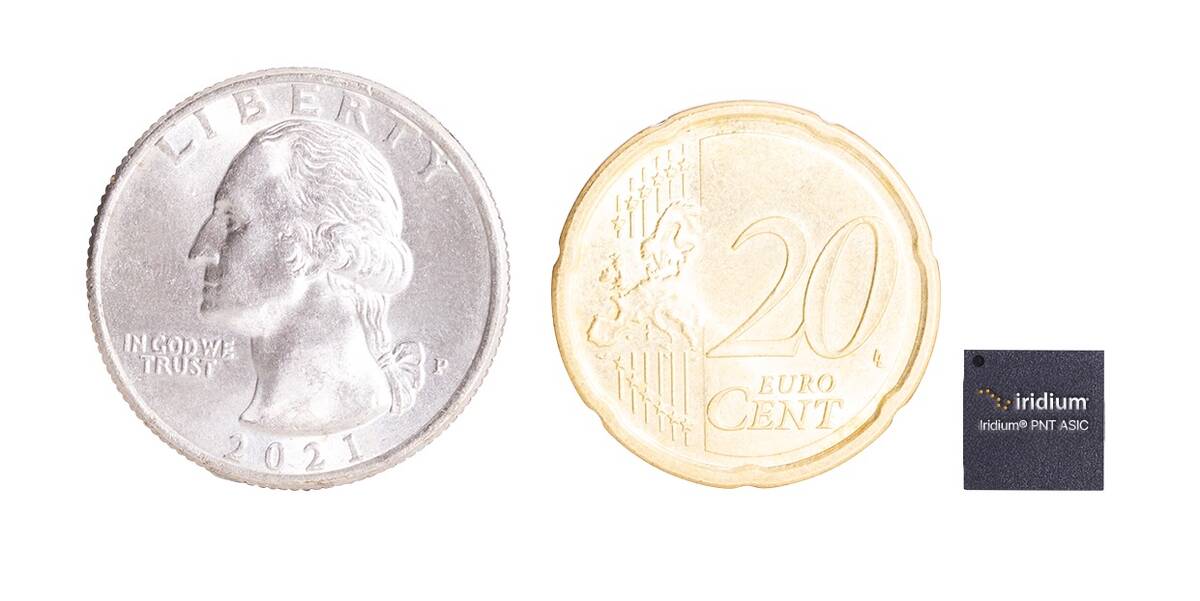Glacier FarmMedia – An American company uses genome sequencing of soil tests to monitor pest, disease and fertility risks for corn and soy crops.
Pattern Ag uses soil metagenomics, a tool that can identify compounds produced by microbes in soils, to produce long-term predictions about crop risks and nutrient deficiencies for row crops.
“We provide advanced predictive analytics of the soil back to the grower. We’re focused on helping the grower improve top-end yield by understanding the biology that exists in their soil,” said Chris Abbott of Pattern Ag.
Read Also

New Iridium technology helps block GPS spoofing
A tiny new chip will allow Iridium’s Positioning, Navigation and Timing (PNT) signals to be received much smaller devices, create a backstop against Global Positioning Systems (GPS) spoofing.
“We DNA sequence the soil and we look at the entire biology. Then, once we have that, then we look for very specific things. We’re utilizing metadata to find pathogens and also beneficial bacteria and fungus that exist in those soils that are going to impact the top end yield.”
The genomic sequencing can identify multiple pathogens and pests including corn rootworms, soybean cyst nematode, sudden death syndrome, pythium, fusarium, rhizoctonia, white mould, soybean stem canker and soybean brown stem rot.
The test Pattern Ag uses can tell producers whether the pathogens exist in the soil but not the specific races, which would be required to help growers choose specific crop protection products with different active ingredients to help manage resistance.
[RELATED] ONFARM launches new data dashboard for Ontario soils
“We’re not at that level yet because that gets down into individual species. We have the capacity to be able to do that, but it’s a much deeper level of analysis that has to be done and bioinformatics that has to be built, but it is something that we are looking at for future products,” Abbott said.
Growers can use the service to see the level of pathogen pressure in each of their field grids.
“You can see the actual parts per million of disease inoculum. You can see exactly how many northern and western corn rootworm eggs that exist, and then there’s a very simple recommendation that we make on each one of those fields,” Abbott said.
Pattern Ag also looks for positive soil attributes.
“We’re looking at genetic pathways that exist in the soil that would break down phosphorus, for example, so you could tell whether you needed a phosphorus solubilizing microbial product on that field, what the phosphorus solubilizing potential is, what the denitrification potential is of that soil, so do I need a nitrogen stabilizer?” Abbott said.
The soil analysis also indicates whether an inoculant is needed for soybeans.
The company plans to increase the number of pathogens and positive soil attributes it can monitor.
When it comes to the soil testing protocol, Abbott said the company’s standard protocol divides a field into 10-acre grids, and then 12 to 14 cores are pulled from each grid that are combined into a single composite sample that is sent to the lab.
However, he said soil testing can be altered to better fit a field or farm.
Samples are typically taken in fall because pathogens that may cause problems in the following year will be present, so there’s enough time for growers to use the results to inform their management decisions.
“From the time samples are received in the lab to when they’re (farmers) going to see the results in the app is about two weeks. That’s plenty of time for them to make decisions on seed selection, insecticides, fungicides, crop rotation and any other management decisions that they’re going to need to make on those fields,” Abbott said.
Microbial activity in soils is affected by moisture and temperature, but Abbott said Pattern Ag’s test provides consistent results regardless of environmental conditions.
“We’ve pulled samples both in the spring and fall and we find no difference, or very little difference between the results that we get because we’re looking at everything from the DNA that exists in the soil, not actually how they’re behaving in the soil,” Abbott said.
[RELATED] Farmers test microbes to nourish crops as climate pressure grows, costs rise
“We want to know what levels that they exist in, such as mycorrhizal fungi for beneficials, and to determine how healthy is that field and do they need to be adding things into their soil to get some more biology or to get more biological diversity going on.”
When the soil samples get to Pattern Ag’s lab, the genetic material is condensed into a one-millilitre sample.
“We’re taking all that biology and then running it through our sequencer. A typical soil sample that goes off to a normal lab is going to have about 10 data points. We’re doing 10 million reads on the soil biology,” Abbott said.
“Then all of that data goes into our bioinformatics platform, and that’s the machine that we’ve been building since 2018.”
He said the bioinformatics platform can pick up more than 10,000 different species in the soil and 500 billion microbes, which is interesting but not actionable.
“So, the bioinformatics work that our data science team has built really takes that super complex metadata and then looks for very specific things within it to inform decisions,” Abbott said.
“What we do is we take that super complex data, and we take the algorithms that we’ve developed over time to look for those specific things. Then we turn it around into an intuitive platform.”
Pattern Ag has not included weather forecasts in its predictions, but Abbott said this feature will be added next year.
The company also plans to increase the number of crops it provides forecasts for, and it plans to expand into countries beyond the United States.
Pattern Ag does not offer a direct to grower model because it typically works with other service companies, including agronomic services.
– This article was originally published at The Western Producer.














